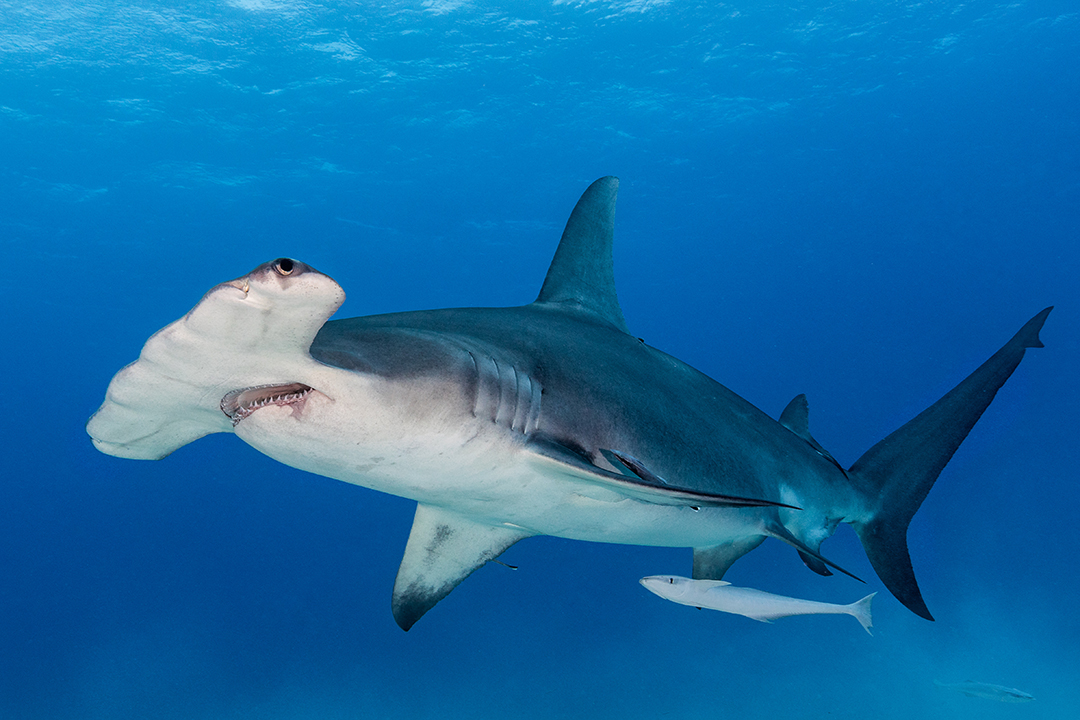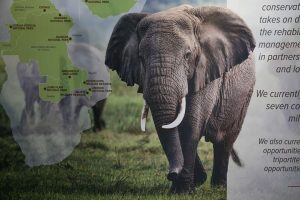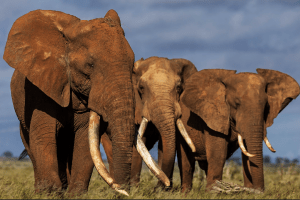By Daniel Kachelriess and John Scanlon AO
In Memoriam. Fabio H. V. Hazin, shark biologist and bridge builder between UNCLOS, Fisheries, and CITES
The Convention on International Trade in Endangered Species of Wild Fauna and Flora (CITES) takes decisions by voting where consensus cannot be found, which has been critical to bringing new shark species under its trade controls. Combined with many high-profile topics for discussion, voting makes CITES Conferences of the Parties (CoPs) highly dynamic events, where emotions can run high. Next to the African elephant debates, listings of commercially exploited marine species, in particular sharks and rays, have long been among the most emotionally charged discussions.
The Convention text adopted in 1973 foresaw marine species listings. It included several provisions specifically for that purpose, while taking care not to upset the then ongoing codification of the Convention on the Law of the Sea (UNCLOS). One of these provisions is “Introduction from the Sea,” defined as “transportation of specimens taken in areas beyond national jurisdiction into the territory of a State.” While this unique provision gave CITES a potentially broad mandate for regulating trade in species taken from the high seas, the challenges in operationalizing this provision presented a major barrier for initial shark and ray listings.
After some initial successes in listing large charismatic sharks of limited commercial interest, the first major attempt to list commercially exploited sharks in Doha, Qatar, at CoP15 (2010) was rejected. Not to be deterred, the proponents tried again at CITES CoP16 (2013) in Bangkok, Thailand. There was much nervousness about the fate of these proposals.
The first vote in Committee I on adding three species of hammerhead sharks to CITES Appendix II was carried by the narrowest of margins. In a secret ballot vote, 92 voted in favor, 42 against, and eight abstained. It was followed by cheers that could be heard across the conference hall. The oceanic whitetip and porbeagle shark were also successfully listed at CoP16. What had happened?
Lead up to CoP16: Lessons learned
While there were many factors contributing to this shift in the voting pattern, some stand out.
A Standing Committee working group led by Roddy Gabel (US) and Fabio Hazin (Brazil) proposed a solution to operationalizing “Introduction from the Sea,” conceived by Hazin and run past the Secretariat over dinner in 2012, that found initial agreement with a majority of parties at the Standing Committee, and would later be adopted at CoP16.
Also between CoP15 and CoP16, parties, stakeholders, and the Secretariat started to work on implementation support for potential future listings, with the EU committing funding to support implementation, and several other parties and stakeholders developing and circulating implementation support tools, in particular identification guides.
Last but not least, proponents of the listings agreed to an 18-month delayed entry into force to allow countries to resolve any technical implementation challenges. It was this overall package of measures that convinced enough parties to support the proposed listings.
CoP16: The breakthrough
The successful Appendix II listing of commercially harvested sharks at CoP16, despite narrow margins, was a major breakthrough. With dedicated funding for capacity building for marine species, and the establishment of a dedicated staff position for marine issues in the CITES Secretariat, the Secretariat was able to forge a closer working relationship with the Food and Agriculture Organization of the UN (FAO), and many other entities working on fisheries, focused on practical issues of joint interest. At the same time, parties and stakeholders also continued to invest in capacity building and implementation support tools, lowering the barrier for future listings significantly.
CoP17, CoP18, Cop19: Carrying forward the momentum
These efforts were well received by many parties, as demonstrated by the consecutive adoption of additional listing proposals for commercially exploited sharks, with ever growing voting margins, and a modernization of CITES’ long-term guidance on the conservation of sharks at CITES CoP18 in Geneva, Switzerland. CITES CoP19 in Panama City, Panama, saw the most ambitious shark proposal yet, with the host country and 40 co-sponsors proposing listing the entire family of requiem sharks, including the most caught shark, the blue shark, in Appendix II. CoP19 also saw, for the first time in CITES history, a shark proposal adopted by consensus.
This long streak of shark listings being adopted brings the number of shark species listed under the Convention close to 200, which shows that parties have decided that CITES has an important role in the regulation of international trade in sharks.
Reviewing implementation
The decision to list a species within CITES Appendices is only the beginning. It is critical that CITES delivers real conservation outcomes for the listed shark species. Monitoring of the implementation of the listings has rested with the CITES Animals Committee, in particular its shark working group. The Secretariat’s reports to the working group and its deliberations show a mixed picture.
There has been significant investment in implementation, but concerns have been raised in reports and decisions about an “apparent mismatch between the trade in products of CITES-listed sharks recorded in the CITES Trade Database and what would be expected against the information available on catches of listed species.” Similarly, a 2018 review of the implementation of the Introduction from the Sea provisions also paints a mixed picture. We have yet to see a Review of Significant Trade for any of the newly listed sharks, which is CITES’ peer review of implementation and its “safety net.”
New partnership for implementing shark listings
It is also key that support to implementation does not ebb off. There remains a need for capacity building, targeted research, and initiatives that continue to build bridges between CITES and fisheries actors. Currently, it is largely individual parties and civil society that continue to fund and support this important work.
CITES has initiated, or joined, many important partnerships to enhance implementation, including the International Consortium on Combating Wildlife Crime (ICCWC) on enforcement in 2010, InforMEA on information in 2011, the Collaborative Partnership on Sustainable Wildlife Management on sustainable use in 2013, the UN Conference on Trade and Development (UNCTAD) on e-permitting in 2014 and Blue BioTrade in 2020, and the International Tropical Timber Organization (ITTO) on trees through the CITES Trees Programme in 2017.
The time has clearly arrived for a bold new partnership on implementing CITES shark listings. Such a partnership should be of the same scale as what CITES initiated through ICCWC and the tree species programme. Partners in a CITES sharks programme could include the Convention on the Conservation of Migratory Species of Wild Animals (CMS), FAO, and regional fisheries management organizations (RFMOs).
Looking ahead to the next 50 years
After getting off to a 40-year slow start, over the past decade CITES’ 184 parties have shown an ever-growing appetite to entrust the Convention with regulating the international trade in sharks. Whether or not that trend continues, CITES already has its work cut out for it. It is now critically important to demonstrate that the listings are well implemented and translate into conservation benefits on the ground.
This will involve continuing to support parties in implementation, building bridges between CITES and fisheries actors at all levels, from national authorities to Secretariats of relevant international bodies, and establishing new partnerships.
If CITES can rise to the occasion, the future looks bright for the Convention’s role in regulating international trade in marine species.
Daniel Kachelriess is an independent expert on oceans, fisheries, and wildlife law and policy, a member of the IUCN World Commission on Environmental Law, and the former CITES Marine Species Officer.
John Scanlon AO is CEO of the Elephant Protection Initiative Foundation, Chair of the UK Government’s IWT Challenge Fund, Chair of the Global Initiative to End Wildlife Crime, and former Secretary-General of CITES.
On 3 March 2023, CITES will celebrate its 50th anniversary. This article is part of a series themed, ‘CITES at 50,’ the SDG Knowledge Hub is publishing to commemorate the occasion.


